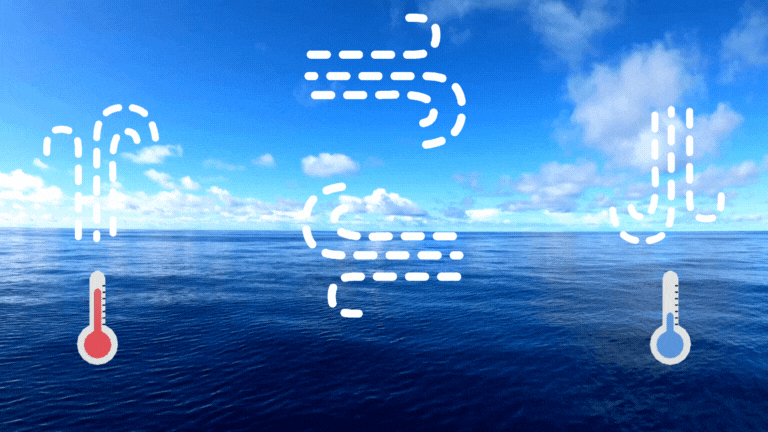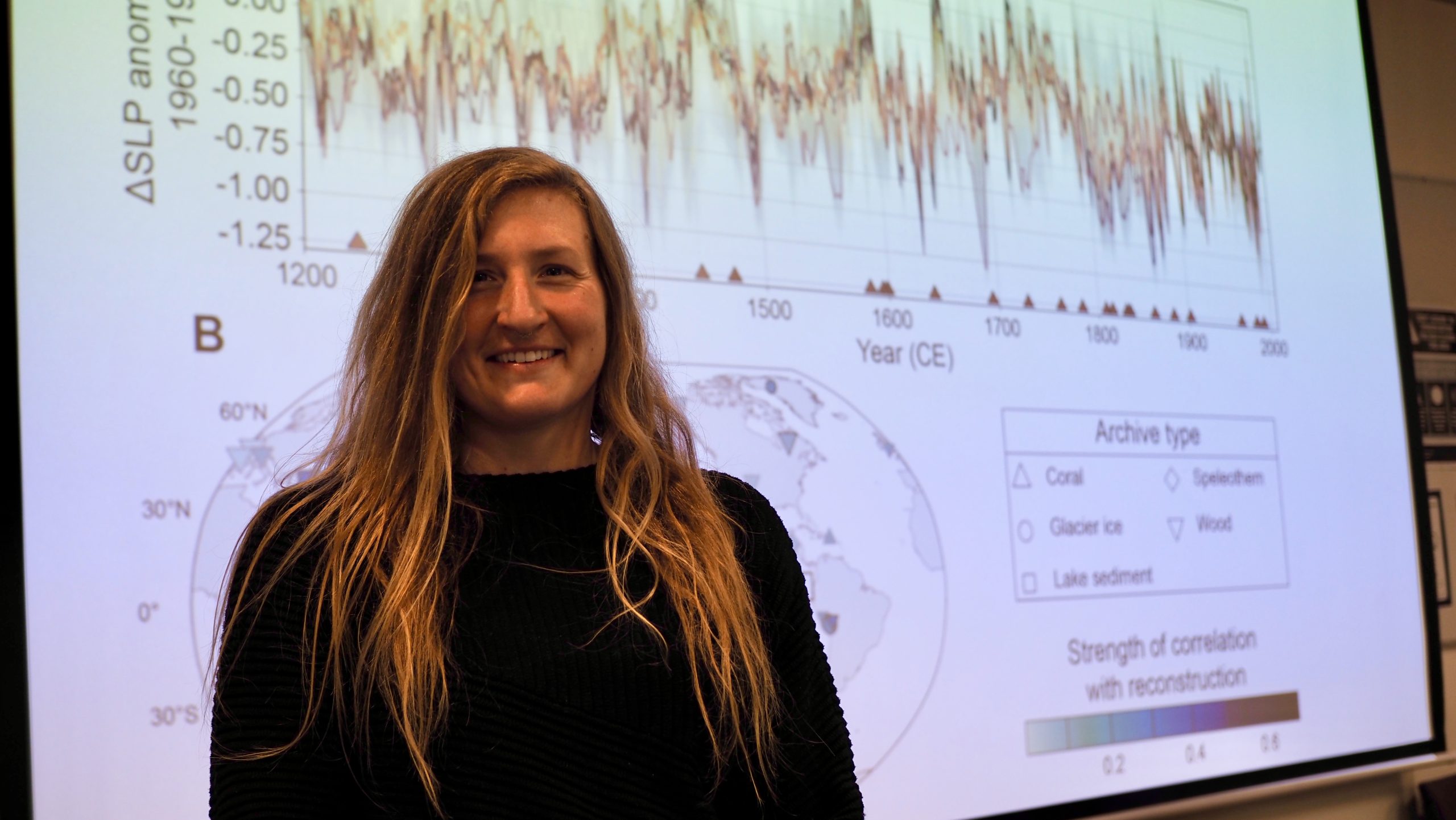Jonathan Brown with Centre researchers.
The Pacific Ocean is one of the most important influences on global climate and weather.
This is largely due to its size – The Pacific Ocean is the largest ocean on Earth and what happens in the ocean and the air around it can have impacts all over the globe.
The El Niño Southern Oscillation (or ENSO) is a climate pattern in the Pacific Ocean where the ocean and atmosphere above it talk to each other.
The Pacific Walker Circulation is the atmospheric part (the airflow above the Pacific Ocean) of the El Niño Southern Oscillation.
The El Niño Southern Oscillation and Pacific Walker Circulation influence different periods of weather around the planet.
We know these periods as La Niña and El Niño. In Australia, La Niña periods are often associated with wet and cold conditions, whereas El Niño periods are often associated with dry and hot conditions.
Why is the Pacific Walker Circulation important for La Niña and El Niño?

The strength of the Pacific Walker Circulation is a major part of what determines if we are in a La Niña or El Niño period.
When the Pacific Walker Circulation is stronger we can expect La Niña-like (cold and wet) conditions and when the Pacific Walker Circulation is weaker we can expect El Niño like (hot and dry) conditions.
Understanding the Pacific Walker Circulation is important, because La Niña and El Niño can have significant impacts on our communities. Communities can be at a higher risk of droughts, fires, rains or floods over these periods.
How do climate scientists research the Pacific Walker Circulation?

Climate scientists like Dr Georgy Falster at the ARC Centre of Excellence for Climate Extremes look to the natural world to analyse hundreds of years of climate data.
While modern technology can give us lots of high quality data about the ocean and the atmosphere today, scientists like Dr Falster look back at what we can learn from ice cores, trees, coral and more to understand the Earth’s past.

“Even if there’s just a little bit of information stored up in an ice core from Antarctica or a tree from China, we can extract that and use that to help us figure out how the Pacific Walker Circulation has changed. I take many datasets that have been produced by different scientists all over the world, over many years, and put those into a big pool of data to see what new things I can pull out.”
Dr Georgy Falster
Scientists are continuing to learn more about the Pacific Walker Circulation and what may happen as human influence on the climate continues to impact our planet.
